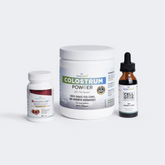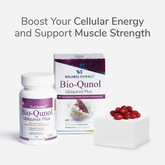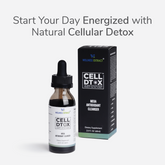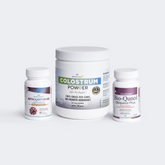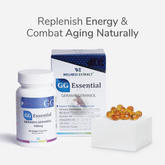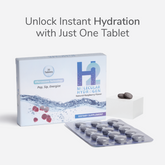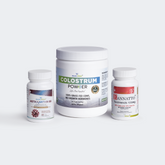Estimated Reading Time: 6 minutes
|So, you know tocotrienols are the real Vitamin E. These are superior antioxidants that your brain, heart, and cells love. You have even picked a trusted brand with DeltaGold tocotrienols for daily supplementation.
But now you're dealing with the actual confusion.
How much should you actually take? 125 mg or 300 mg?
Well, you are on the right page! This blog compiles some proven scientific explanations to help you make an informed decision.
Before You Know the Ideal Dose, Quick Look at Tocotrienols
Tocotrienols aren't your regular Vitamin E. Their structure, absorption, and benefits make them a powerful antioxidant in the family. Here's what makes them different:
-
40-60 times better protection against free radicals
-
Goes beyond antioxidation, supporting heart, brain, and metabolic health
-
Penetrate deeper cellular layers (even lipid membranes)
Backed by science, tocotrienols offer targeted protection where your body needs it most, but only if you take the right dose.
Why Dosage Matters for Tocotrienols
Well, that's not just the case with tocotrienols. The right dose can break or make the results of any supplements. Still can't agree?
Okay think. Can you bake the cake without knowing the right amount of sugar, flour, or butter? Probably not! Or you may end up baking something your taste buds won't appreciate.
That's exactly what happens when you take tocotrienols without knowing the right dose. The amount of tocotrienol you take determines its bioavailability (how much will actually be available for the body), and therefore, its therapeutic potential.
Still, there's no one-size-fits-all tocotrienol dosage. Why? Bioavailability varies from person to person, depending on factors like:
-
Age
-
Sex
-
Physical activity
-
Genetic phenotype
-
GI disorders (eg, malabsorption syndromes)
-
Any other underlying chronic conditions
Moreover, tocotrienols have a shorter half-life (~4 hours). Meaning, it doesn't stay in the body for long to deliver therapeutic effects. Hence, the right dose at the right time is important to maintain its consistent levels.
125 mg vs 300 mg – Which Dose Works for You?
The truth is, both doses work. However, the results vary.
Different health goals have different needs. For general wellness, even 100 mg of tocotrienols per day works well for healthy adults. Targeted health goals, on the other hand, may need a greater dose. And it's not just guesswork. Here's the science behind it.
When You Should Choose 125 mg Tocotrienols
A simple answer: when your goal is overall wellness without focusing on a specific health condition.
About 34-36% of the US population takes Vitamin E supplements for their general health benefits, which include:
-
Fight everyday stress (free radicals, present in the environment)
-
Stronger immunity (cellular protection that prevents you from falling sick repeatedly)
-
Reduce inflammation (a major contributor to chronic diseases)
-
Healthy aging (to reduce visible signs, like fine lines, wrinkles, etc.)
-
Enhanced energy levels (by supporting mitochondrial synthesis)
In a human-based study, 125 mg of tocotrienol has shown sufficient bioavailability (especially compared to tocopherols) to support the general benefits of Vitamin E.
Disclaimer: Always check with your healthcare provider before starting any new supplement.
Read More: Age-Specific Benefits of Vitamin E Tocotrienols.
When You Should Choose a Higher Tocotrienols Dose
If you have deeper health goals, you probably need to increase your daily tocotrienol dose.
-
Doses between 250-500 mg/day were found to decrease serum total cholesterol, LDL-cholesterol, and triglycerides. Moreover, these results are dose-dependent (improvement increases with higher dose).
-
Patients with carotid atherosclerosis were given 160–240 mg/day for 18 months. Results? Significant flexibility in arteries.
-
At a dose of 320 mg/day, tocotrienols have shown a significant (9.2%) improvement in total antioxidant status in healthy adults.
-
In some studies, 400 mg/day of tocotrienols improved outcomes in non-alcoholic fatty liver diseases (NAFLD).
-
Doses of 750 mg tocotrienols and above have shown advanced cellular protection and pro-inflammatory effects (support chronic conditions like cancer, diabetes, and Alzheimer's).
|
How Much Tocotrienols Should You Take |
|
|
Health Goal |
Suggested Dose |
|
Everyday Wellness |
100-125 mg |
|
Heart & Cholesterol |
250-400 mg |
|
Advanced Antioxidant Support |
300-400 mg |
|
Liver & Metabolic Health |
400 mg+ |
Therefore, if you're targeting cholesterol, brain health, or healthy aging, pick 300 mg tocotrienols each day.
Disclaimer: Always check with your healthcare provider before starting any new supplement.
What's the Maximum Tocotrienol Dose You Can Tolerate
Well, that's the good news about tocotrienols. It is safe even at doses up to 3,200 mg/day.
Things to Keep in Mind Before You Start Tocotrienols
Though tocotrienols are well-tolerated even in higher doses, remember, more is not always better. Tocotrienols work in a dose-dependent way only up to a point. Research shows the 'ceiling effect'. Meaning taking a higher dose doesn't always show extra protection.
Here are a few things that you must keep in mind:
-
Since tocotrienols are fat-soluble vitamins, pair them with a high-fat meal for maximum absorption.
-
Stick to what your health goals require instead of mega-dosing.
-
Always consult your doctor before starting high dose tocotrienols. Or better, start with low doses and then increase according to your body's response.
-
Split the higher doses to ensure consistent levels and bioavailability (for example, break 600 mg/day to 300 mg twice a day).
-
Always pick a GRAS-certified softgel supplement for safety and efficacy.
-
Be consistent with the supplements. Take at least 2-3 months to notice significant improvements.
Lastly, remember tocotrienols are not a cure for any diseases. But your scientific support (that's too at the cellular levels).
The Bottom Line
The next time you see 125 mg or 300 mg DeltaGold® Tocotrienols, you won’t be scratching your head. Now you know how to pick the best one for you! 125 mg tocotrienols/day does a foundational job, supporting everyday wellness. For bigger goals, you should pick bigger bro, 300 mg.
And don't forget, how you take it matters. Always pair it with a fat-rich meal and keep it consistent to keep your cellular shield switched on.
Disclaimer: The information provided in this content is for educational and informational purposes only and is not intended as medical advice. Wellness Extract's products are not intended to diagnose, treat, cure, or prevent any disease. Please consult with a healthcare professional before starting any new dietary supplement, especially if you have underlying health conditions or are taking medication.
Frequently Asked Questions (FAQs)
Q1. What's the ideal tocotrienol dose for healthy adults?
100-125 mg/ day
Q2. What are the health benefits of 125 mg tocotrienols?
125 mg tocotrienols per day protects your cells against free radicals and inflammation.
Q3. Can I take more than 300 mg of tocotrienols?
Tocotrienols are safe and tolerated even at higher doses. You can take more than 300 mg of tocotrienols per day to meet your health goals. However, there is a ceiling effect for some health functions, meaning extra doses don't always equal extra benefits.
Q4. Should I take tocotrienol with food?
Yes, you should always take tocotrienols with a fat-containing meal to improve absorption and maximize antioxidant benefits.
Q5. How long do tocotrienols take to show visible results?
Results vary. But in general, you must take tocotrienols for 2-3 months to notice visible improvements.
References
-
Aggarwal BB, Sundaram C, Prasad S, et al. Tocotrienols, the vitamin E of the 21st century: its potential against cancer and other chronic diseases. Biochem Pharmacol. 2010 Dec 1;80(11):1613–1631. doi:10.1016/j.bcp.2010.07.043. Available from: https://pmc.ncbi.nlm.nih.gov/articles/PMC2956867/
-
Ranasinghe R, Mathai M, Zulli A. Revisiting the therapeutic potential of tocotrienol. Biofactors. 2022 Jul;48(4):813–856. doi:10.1002/biof.1873. Available from: https://pmc.ncbi.nlm.nih.gov/articles/PMC9544065/
-
Stielow M. The bioavailability of drugs—The current state of knowledge. Molecules. 2023;28(24):8038. doi:10.3390/molecules28248038. Available from: https://www.mdpi.com/1420-3049/28/24/8038
-
Qureshi AA, Khan DA, Silswal N, et al. Evaluation of pharmacokinetics, and bioavailability of higher doses of tocotrienols in healthy fed humans. J Clin Exp Cardiol. 2016 Apr 28;7(4):434. doi:10.4172/2155-9880.1000434. Available from: https://pmc.ncbi.nlm.nih.gov/articles/PMC4968874/
-
Ahsan H, Ahad A, Iqbal J, et al. Pharmacological potential of tocotrienols: a review. Nutr Metab (Lond). 2014 Nov 12;11:52. doi:10.1186/1743-7075-11-52. Available from: https://link.springer.com/article/10.1186/1743-7075-11-52





















